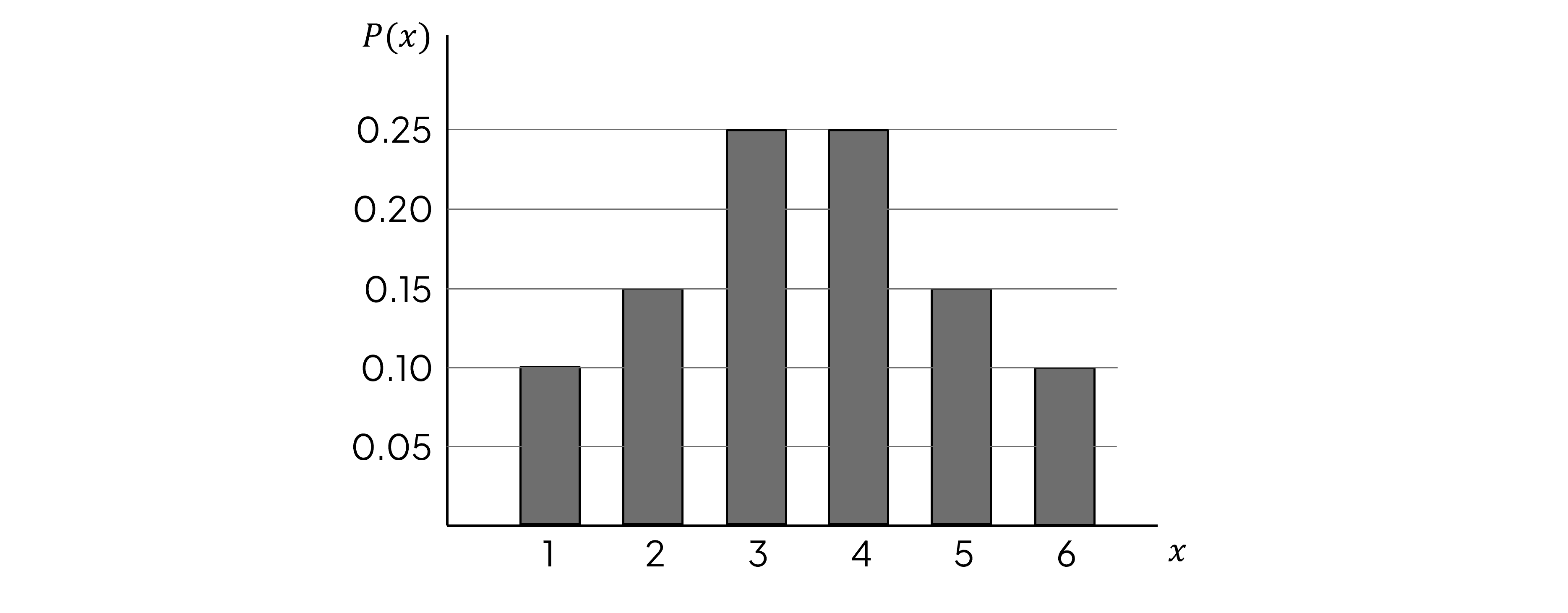Mean & Standard Deviation of a Discrete Random Variable (College Board AP® Statistics): Study Guide
Mean of a discrete random variable
What is the mean of a discrete random variable?
The mean of a discrete random variable is the weighted average of the possible values based on their probabilities
It is also known as the expected value
The mean of a random variable
is denoted
or
How do I calculate the mean of a discrete random variable?
To calculate the mean of a discrete random variable
multiply each possible value of
by its probability
add these together
The formula is
This is given in the exam
If the distribution is symmetrical then the mean is equal to the median of the values
How do I find the mean of a discrete random variable using a calculator?
To find the mean of a discrete random variable
using a calculator
type the values for
in a list as if they were data values
enter their probabilities as the frequencies
find the summary statistics and identify the mean
Examiner Tips and Tricks
If you are asked to find the mean in a free response exam question then you must show your working. You can use your calculator to check your answer.
Worked Example
If a person chooses to donate to a charity, they can pay $1, $5 or $10.
Let represent the amount, in dollars, that a person pays to the charity when donating. The probability distribution of
is shown in the table.
1 | 5 | 10 | |
0.6 | 0.3 | 0.1 |
What is the expected value of the amount that a person pays to the charity when donating?
Answer:
Use the formula
Multiply each value of by its probability then add the probabilities together
The expected value of the amount that a person pays to the charity when donating is $3.10
Standard deviation of a discrete random variable
What is the standard deviation of a discrete random variable?
The variance of a discrete random variable is the expected value of the squared differences between the values and the mean
The standard deviation of a discrete random variable is the positive square root of its variance
The standard deviation of a random variable
is denoted
How do I calculate the standard deviation of a discrete random variable?
To calculate the standard deviation of a discrete random variable
subtract the mean from each value of
square them
multiply each one by the probability of that value of
occurring
add these together
take the positive square root
The formula is
This is given in the exam
How do I find the standard deviation of a discrete random variable using a calculator?
To find the standard deviation of a discrete random variable
using a calculator
type the values for
in a list as if they were data values
enter their probabilities as the frequencies
find the summary statistics and identify the population standard deviation
the sample standard deviation,
, should not exist in this case
which means
and numbers cannot be divided by zero
Examiner Tips and Tricks
If you are asked to find the standard deviation in a free response exam question then you must show your working. You can use your calculator to check your answer.
Worked Example
The probability distribution of the discrete random variable is shown by the following graph.

(a) Explain why the expected value of is 3.5.
Answer:
The distribution is symmetrical therefore the mean is equal to the median which is 3.5
(b) Calculate the standard deviation of .
Answer:
Use the formula
Read the probabilities from the graph
Subtract 3.5 from each value of , square it and multiply it by its probability
Add together the probabilities and take the positive square root of the result
The standard deviation of is 1.43

Unlock more, it's free!
Did this page help you?